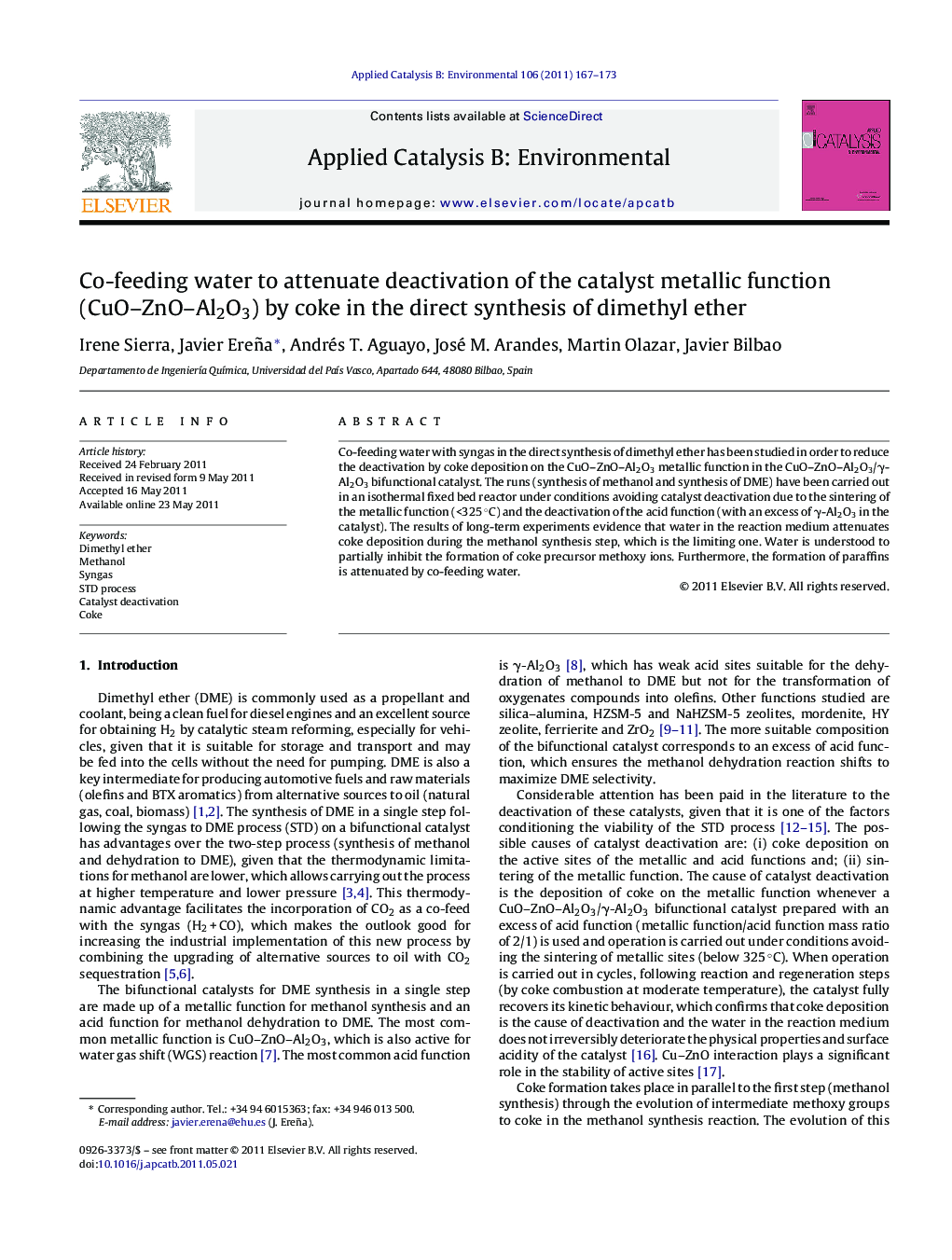| Article ID | Journal | Published Year | Pages | File Type |
|---|---|---|---|---|
| 47057 | Applied Catalysis B: Environmental | 2011 | 7 Pages |
Co-feeding water with syngas in the direct synthesis of dimethyl ether has been studied in order to reduce the deactivation by coke deposition on the CuO–ZnO–Al2O3 metallic function in the CuO–ZnO–Al2O3/γ-Al2O3 bifunctional catalyst. The runs (synthesis of methanol and synthesis of DME) have been carried out in an isothermal fixed bed reactor under conditions avoiding catalyst deactivation due to the sintering of the metallic function (<325 °C) and the deactivation of the acid function (with an excess of γ-Al2O3 in the catalyst). The results of long-term experiments evidence that water in the reaction medium attenuates coke deposition during the methanol synthesis step, which is the limiting one. Water is understood to partially inhibit the formation of coke precursor methoxy ions. Furthermore, the formation of paraffins is attenuated by co-feeding water.
Graphical abstract.Figure optionsDownload full-size imageDownload as PowerPoint slideHighlights► A CuO–ZnO–Al2O3/γ-Al2O3 bifunctional catalyst is used in the direct synthesis of DME. ► The catalyst deactivation is attenuated by co-feeding water with syngas. ► This attenuation is attributed to the inhibition in the formation of methoxy ions. ► Co-feeding water also attenuates the formation of paraffins. ► A water/syngas molar ratio of 0.20 in the feed is suitable to attenuate deactivation with high DME yield.
